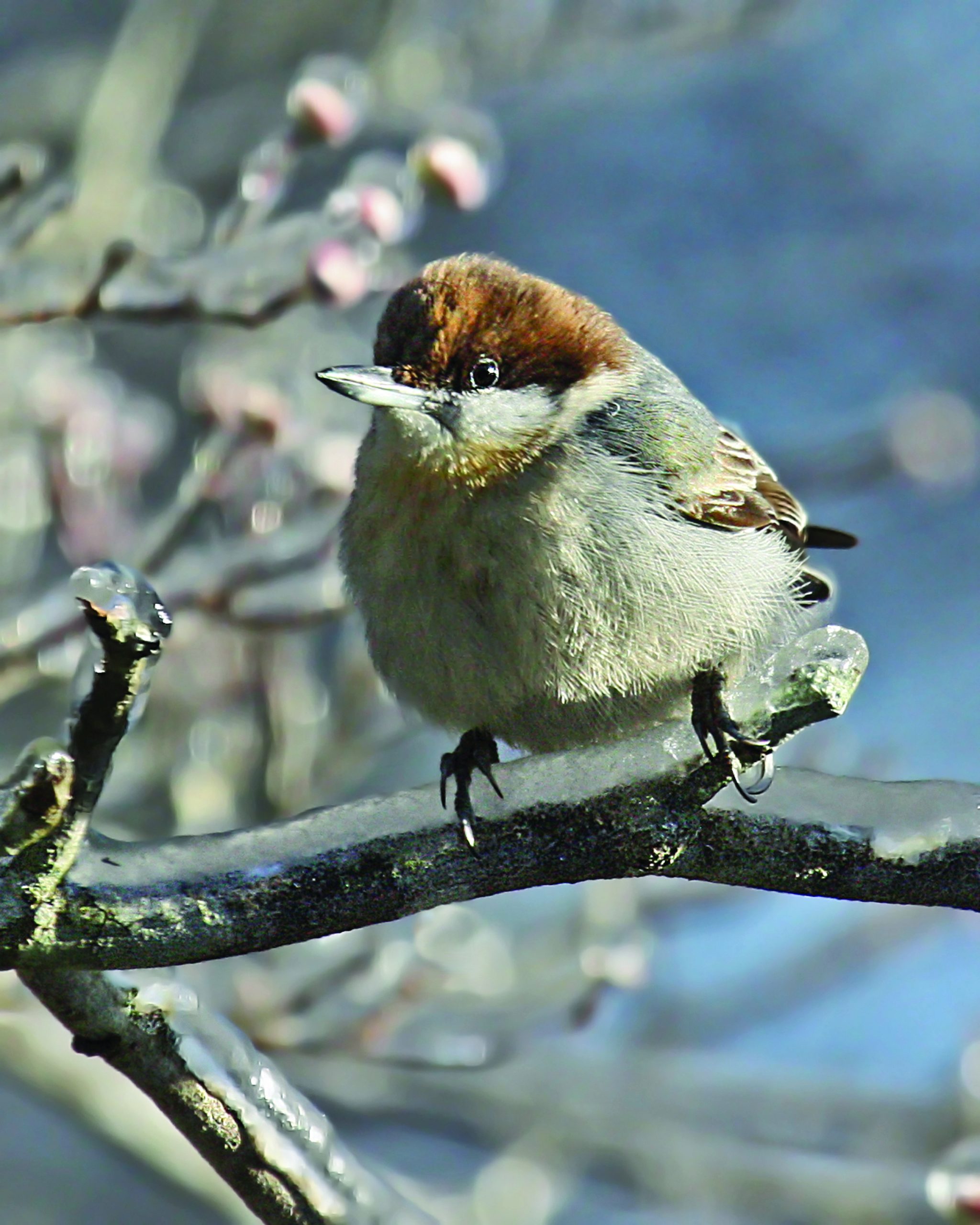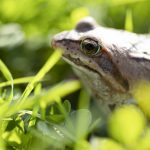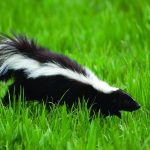
Brown-Headed Nuthatch
The squeaky toy in Triad treetops
By Susan Campbell
If you have ever heard the sound of what seems to be a squeaky toy coming from the treetops here in the Triad, you may have just had an encounter with a brown-headed nuthatch. This bird’s small size and active lifestyle make it challenging to spot, but once you know what to look — and listen — for, you will discover a common year-round resident and a bird of stunning, but subtle coloration.
Brown-headeds are about four inches long with bright white bellies, contrasting gray backs and, as the name suggests, chocolate-brown crowns. Interestingly, males are indistinguishable from females. Their coloration creates perfect camouflage so they’re hard to see among the pine branches where they forage for seeds and insects. Their oversized bill allows them to pry open a variety of seeds as well as pine cones. With sharp eyes, you can see them dig deep in the cracks of tree bark hungry for grubs. By virtue of their strong feet and sharp claws, brown-headed nuthatches can clamber down the trunks of trees with the same ease that other birds crawl up.
Although they do not sing, these birds have a distinctive two-syllable squeak that they sometimes roll together whenever they really get excited.
Brown-headed nuthatches love bird feeders. So if you live near a significant stand of mature pines, you will have a good chance of seeing them up close. Brown-headeds, when they have found free food, will frequent both hanging suet and sunflower-seed feeders from dawn until dusk. They quickly grow accustomed to people, so viewing them at close range is possible, as are fantastic photo opportunities.
This species is one of the area’s smallest breeding birds. It is a nonmigratory resident, living as a family group for most of the year. Unlike its cousin, the white-breasted nuthatch, which can be found in mixed forests across the state, the brown-headed is a bird that thrives only in mature pine forest. Brown-headeds are endemic to the southeastern United States, from coastal Virginia through most of Florida and west to the eastern edge of Texas. Their range actually covers the historic reaches of the longleaf pine. This little bird, however, has adapted to living among loblolly and Virginia pines as large stands of longleaf pines have become scarcer and scarcer.
Brown-headed nuthatches have long excavated their own nest holes in small dead trees in early spring. But over the years the number of the appropriate sized trees has diminished due to humans tidying up the landscape. Luckily, brown headed nuthatches have taken to using nest boxes whenever available. However, unless the hole is small enough to exclude larger birds such as bluebirds, they find themselves out-competed for the space. For this reason the species is now one of concern across the Southeast, with populations in decline. In addition to issues related to nesting, logging, fire suppression and forest fragmentation pose significant challenges for brown-headed nuthatches.
Because of the obstacles these small birds face, North Carolina Audubon has begun a campaign to encourage bird lovers to help brown-headed nut hatches. The goal is to increase smaller nest boxes available across our state by 10,000 within the next two years. Please consider getting involved and check out: nc.audubon.org/make-little-room-brown-headed-nuthatch.





